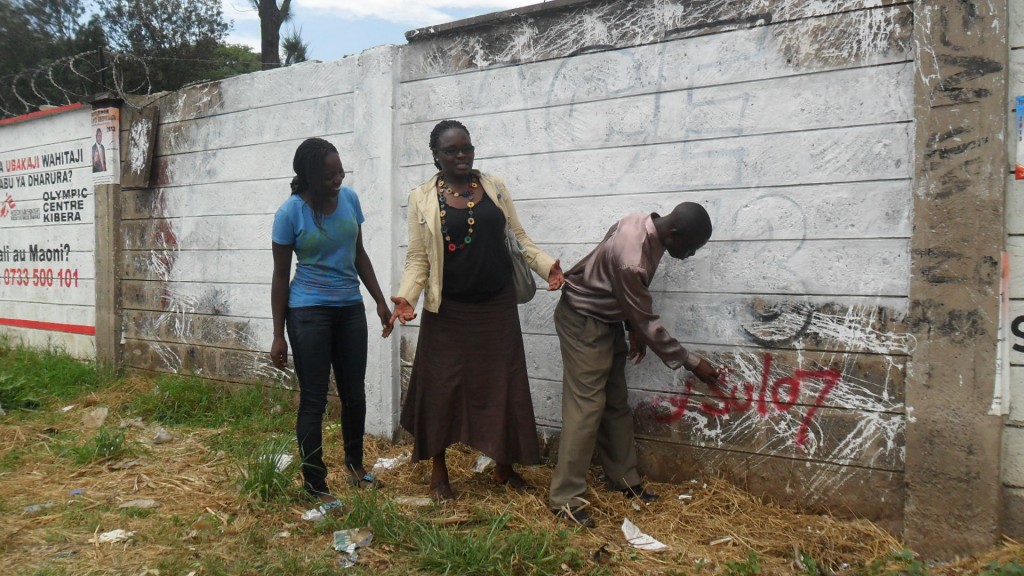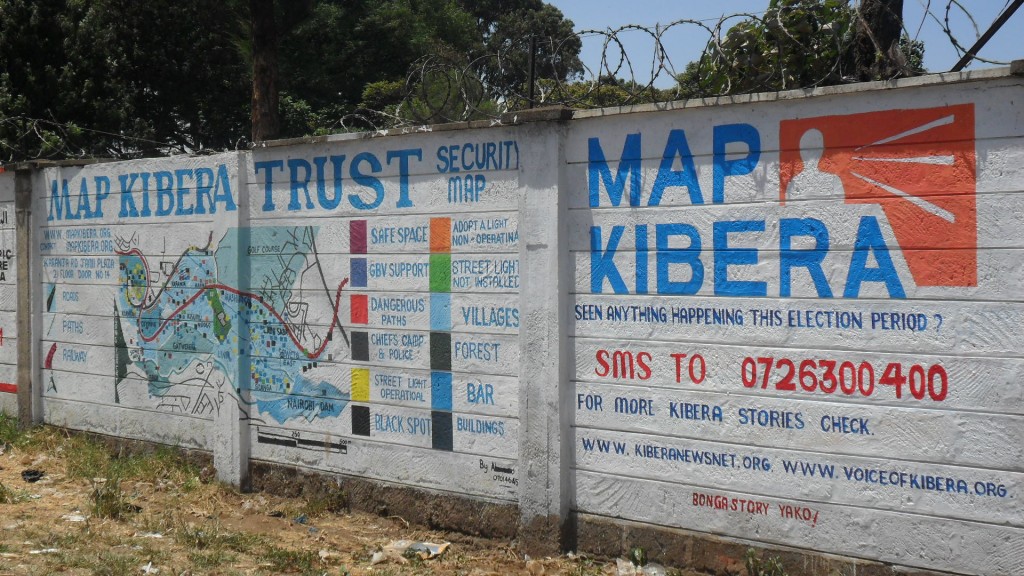Map Kibera Trust has completed painting a security map on two walls in Kibera as a community outreach program.
Wall painting played a big role in providing key security information during the just concluded general election; particularly to visitors and even the locals who don’t know about certain political hotspots, and unsecure places in Kibera.

The state of the identified wall. It was dirty full of political aspirants’ posters. The first duty was to clean it up.
The exercise was coordinated by Millicent Achieng and Douglas Namale; who worked together with Mappers and other stakeholders. The stakeholders were the Provincial Administration, District Peace Committee (DPC), Labour Youth Group, Youth Reform, and Community Artists, opinion leaders, youth leaders and political leaders and Map Kibera Trust staff.
The youth groups helped to identify the walls and are providing security to the painted walls protecting them from political posters and other interests. We had four consultative meetings with stakeholders to identify the map to be painted on the wall from the five thematic maps developed by MKT. The stakeholders settled on the security map, because it coincided with the general elections expected to take place in March 4th 2013.
Labour Youth group and Youth Reform played a key role to secure the wall where the map was to be painted. They also volunteered to provide security during and after painting. Labour youth group also helped us get the best artist who painted the map on the wall. It’s worth mentioning that the artist is also a Kibera youth. The artist also volunteered to help MKT secure walls in other parts of Kibera to paint the same map.
Coordination between the Artist, Labour Youth Group, Youth Reform and MKT office was cordial. They coordinated with Mappers well, to facilitate the exercise. The artist’s flexibility made it possible for many adjustments on the map during the exercise, before the final map was accepted.
Immediately the wall painting started, we witnessed crowds gathering next to the venue and watched the artist as he painted. Village and religious leaders congratulated the work and pointed at some areas we had identified as black spots which they confirmed to be so.
DPCs and the Provincial Administration also confirmed the wall image as a good idea. School children stood and watched the map, and some teachers are now referring to the map in their lessons. We have also received visitors in the office, who have confirmed to have been directed by the map painted on the wall.
Challenges
Wall identification was challenging. We used different methods which failed before we settled on the Youth groups. City council of Nairobi demanded Ksh. 9000 as advertisement fees and other unexplained fees with other draconian procedures which made it impossible to paint the wall. Although the City council demanded the advertisement fee, they could not guarantee security of the painted wall. It’s worth mentioning that the city council does not have the wall, the walls belongs to private developers, who are denied jurisdiction to accept anybody to paint or draw anything without the City council’s consent.
Apart from the city council melee, some of the walls painted were not wide enough to accommodate the map contents correctly; the artist had to squeeze the contents to fit. Another problem was that some of the data on the map was obsolete because it was about one and half years old. This was attributed to the extended time spent to search for the walls. The shorter period allocated to planning also played a role to this since the data Mappers had collected did not feature on the map which was painted on the wall.
Despite all this, the two walls painted has increased Map Kibera Trust’s contents visibility offline by a huge margin, particularly the general public who are not members of organized groups like NGOs, CBOs and Youth groups. The visibility offline can increase if more walls can be identified and painted in other villages in Kibera, particularly along busy streets and paths.


